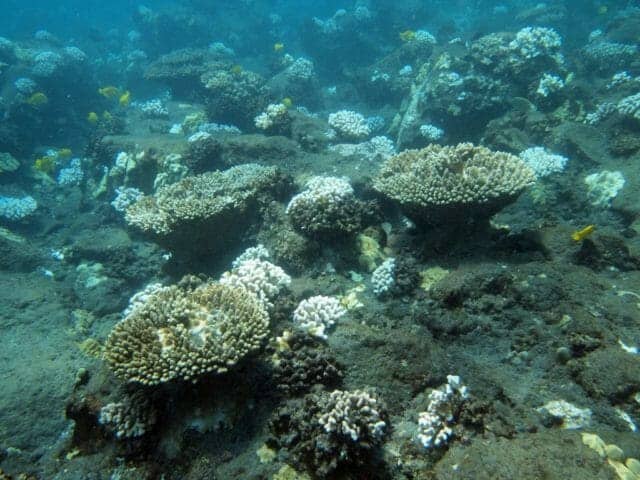Her time in the underwater wasteland has gotten easier these days for coral research diver Lindsey Kramer. Stationed in Kailua-Kona — ground zero for the worst recorded coral bleaching in state history in 2014 to 2016 — Kramer wept when she first witnessed the trails of telltale mucus drifting from pillared colonies that were 500 years in the making.
Some 80 percent of cauliflower corals are dead off West Hawaii. Gigantic colonies of mounding coral have succumbed — to the tune of 93 percent. As these structures disintegrate in slow motion, scientists worry the dead masses of calcium carbonate will break off and roll around, pulverizing the surviving corals. But in the immediate aftermath of the bleaching — if you don’t look too hard at the devastation sleeping under the algae — you could almost pretend things are back to normal. Once bleached like bone, some 50 percent of the coral has recovered off West Hawaii, the state Division of Aquatic Resources determined last year. A bleaching-resistant coral not normally found in the Main Hawaiian Islands is seen off of Keauhou. “You kind of get used to coral mortality. It’s not quite so raw now,” said Kramer, who heads[…]
Full article: Bret Yager: Scientists Race To Help Hawaii Corals Survive
More about ocean coral:
U.S. Supreme Court Agrees to Hear Hawaii Clean Water Act Case
A killer coral disease has reached Key West, scientists say — and it’s not stopping
The State of Coral in the Northwestern Hawaiian Islands
The race to save Florida’s devastated coral reef from global warming

